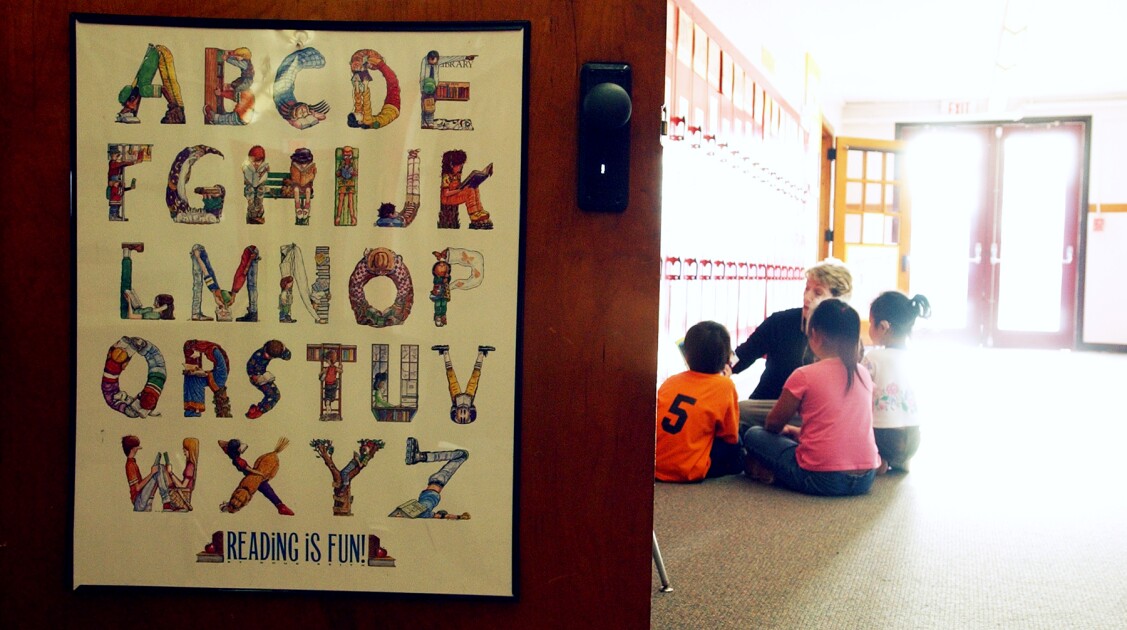It’s becoming a familiar question: How can we ensure that American students have the knowledge and skills necessary to succeed in today’s global economy? A big part of the answer is contained in the goals we set for them in the form of proficiency standards—the level of literacy or numeracy a student must reach.
These standards exist, of course, in all 50 states and the District of Columbia. But they tend to be too low and too different from each other. Harvard University’s Paul E. Peterson and the American Enterprise Institute’s Frederick M. Hess, for example, recently found that only three states—Massachusetts, Missouri, and South Carolina—have proficiency standards equal to those of the most educationally demanding nations. At the other extreme, their analysis suggests, states such as Georgia and Tennessee declare “proficient” students who cannot be considered either literate or numerate.
To address the problem of low and varying standards, the Obama administration has come out in support of a single national standard for these areas of learning, something that conservative groups such as the Thomas B. Fordham Foundation have been advocating for years. Supporters of every stripe can foresee all states freely converging on national content standards someday. In June, 46 of the nation’s governors, acting through the National Governors Association, signed on to a plan to develop common standards in math and reading. Earlier this month, the number increased to 47.
But agreement is meaningless unless the standards agreed upon have teeth. In fact, most states adopt low standards because these produce high passing rates, which in turn reflect well on the local political establishment. Ordinary citizens are also pleased to hear that high percentages of their children are reading at or above a level defined as “proficient,” and so they don’t bother to ask what proficiency entails. Ironically, the No Child Left Behind Act, which was aimed at elevating student performance, has reinforced states’ tendencies toward leniency by allowing them to set their own standards while threatening sanctions if too many students fail to meet them.
A voluntary national standard, therefore, would either be a low one, so as to encourage participation, or a higher one that would produce a low participation rate. A rigorous, mandatory national standard is hard to imagine, because political pressure from poorly performing states would more than likely lead to a single, lax standard. That would result in an even worse outcome than the present patchwork system, which does allow for pockets of excellence like Massachusetts.
Difficult though it may sound, there is a way to afford states the autonomy on which they insist, while giving them incentives to steadily elevate their standards. The place to do it is in the No Child Left Behind law itself, which is coming up for reauthorization.
The needed amendment would take account of not only the percentage of students meeting a proficiency benchmark, but also students’ yearly academic gains, so that even states that clung to low standards would have reason to take measures to improve the education they offer. (Several states and urban school systems have already adopted systems that weigh both indices.) Since the respective states’ proficiency standards would still be allowed to differ, the tests they administered would have to be normed. So every few years, the federal government would administer each state’s test to a small but nationally representative sample of students. The percentage of test-takers who met the proficiency benchmarks on each state’s exam would reveal precisely how difficult each assessment was.
A revised NCLB law might then link some percentage of the per-pupil federal funding a state receives to this measure of its standard’s relative difficulty. The policy that resulted might give the largest amount of funding per pupil to the state with the highest standard, the next-largest amount to the state with the next highest standard, and so on. An even better system would take into account not only where a state’s proficiency standard ranked nationally, but also the degree of difference between its standard and those of states immediately above and below it.
States would then have an incentive to compete for greater funding by setting higher standards for their students. Because some, still-to-be-decided-on portion of the accountability score would be linked to the number of students meeting the proficiency standard, states would be deterred from setting unreasonably high standards. In contrast to a politically vulnerable national standard, or one that relies on states’ continuing goodwill, an objective measure of difficulty, coupled with a financial incentive to set standards higher than the next state, should make such a scheme self-sustaining.
Another benefit would be that, over time, the various definitions of proficiency would become more rigorous, as states competed with each other for federal dollars. Indeed, this would bring us closer to a single but continuously evolving national standard. All fixed definitions of proficiency are arbitrary. Under the proposed system, the answer to the question, “What should students know?” would always be “More!”







